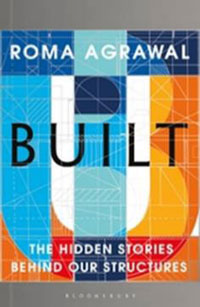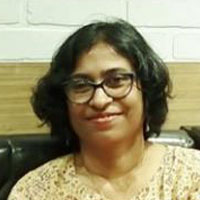A Memoir on Civil Engineering
Tekton
Volume 7, Issue 2, September 2020
pp. 84 – 86
Aruna Sri Reddi
The book ‘Built’ is written by Roma Agrawal who is a civil engineer by both training and practice. In this book, the author explains building materials, construction techniques, and influencing factors such as wind, fire, soil and gravity in different chapters. She also discusses certain types of buildings such as skyscrapers, bridges and the supporting systems for the buildings to sustain. In addition, she has one chapter for her idol Emily Warren Roebling who made niche for herself in a majorly a man’s world. Finally, she ends the book with a chapter on the imagination and use of computers in the engineering design.
The book is written in first person by the author that gives the feel of reading a memoir. But this book is more than just the author’s experiences and anecdotes. It integrates civil engineering seamlessly with plenty of examples from the past to the present in the narration. As the adage goes—a picture is worth a thousand words, Small hand-drawn pictures and photographs are embedded throughout the book for the reader to enhance the understanding. For example, a column can fail two ways: column crushing or column bowing. This may not be clearly visible for a normal eye when the column is in the initial stages of failing unless someone reads about them somewhere. In page no-19, this difference has been explained with simple drawings. In the same way how a beam can fail is explained in the page no-21. In the chapters ‘Pure’ and ‘Clean’ Roma discusses the importance of water and sanitation for any civilization to sustain without which there is no meaning of designing or building any kind of buildings.

Built-The Hidden Stories Behind Our Structures (2018)
Author: Roma Agrawal
Publisher: Bloomsbury Publishing, UK
Pages: 320
Price: INR 398
Roma not only explains the meaning and role of different terminology of civil engineering but also talks about those who have any role in it to make it as an interesting subject. In the chapter ‘Sky’ you would read about one of those role players—Fazlur Khan—who invented tubular system in the structural design that changed the skyline of world cities today. In the chapter ‘Idol’ Roma introduces Emily Warren Roebling to us and explains why she is her idol. Roma experienced clear gender difference in her work place and she discusses this difference with certain muse. However, she also hopes for the women to partake more in practicing civil engineering as a career. This experience might have had an impression to make Emily as her idol as Emily has taken up a job in building the Brooklyn Bridge which no one has thought that she would be capable of.
This book is all about civil engineering, but by no means is this to teach ‘The Civil Engineering’ or one could learn civil engineering after finishing reading this book. Instead, this book talks about the difficult engineering terms with ease and tries to explain the real meaning of them and what it is meant to understand the role of civil engineering in the building construction. The language used is easy to read and one doesn’t need to keep a dictionary next to them while reading this book.
There are few hiccups in reading this book, however. Though this book is written in first person, the author could have avoided the use of ‘I’ so much so that it would not have been an interruption to the reader. Despite she has written about her personal experiences in her work place, Roma did not mention about her colleagues’ contributions in ‘her’ projects. No large project is designed and materialized by a solo engineer! And as this book is written in a memoir style, no references are made in the text except for the bibliography in the end. So there is no way of fact checking on what the author has written. As the internet sources are easily available today, many of the explanations from the book may be referred or fact checked online, however this may kill the purpose of writing this book! A previous review by Peter Tillman mentions about ‘some serious flaws and caveats’ about this book (https://www.goodreads.com/book/show/34921647-built). It is better for the author to respond to these comments, rectify the mistakes if any, and bring the next corrected version soon. Despite of few flaws, this book is a good read for those who intend to take up Civil Engineering but hesitant as they don’t know what they are getting into. It is equally relevant for those in the field of architecture but are afraid to grapple with the engineering concepts.
 Aruna Reddi, PhD is currently working as a Professor in BMS School of Architecture, Bangalore. Before joining BMSSA, she worked in Pillai College of Architecture and NIT Calicut as a faculty member. She teaches the subjects of Architecture, and Urban & Regional Planning at both Bachelors and Masters Level. Before getting into academics, she worked in the USA and India in the field of transportation planning and Architecture respectively. She was also an Associate Editor of this journal ‘TEKTON’. Her research interests include land use, transportation planning, and growth management techniques.
Aruna Reddi, PhD is currently working as a Professor in BMS School of Architecture, Bangalore. Before joining BMSSA, she worked in Pillai College of Architecture and NIT Calicut as a faculty member. She teaches the subjects of Architecture, and Urban & Regional Planning at both Bachelors and Masters Level. Before getting into academics, she worked in the USA and India in the field of transportation planning and Architecture respectively. She was also an Associate Editor of this journal ‘TEKTON’. Her research interests include land use, transportation planning, and growth management techniques.
Email: aruna.r@bmssa.ac.in

